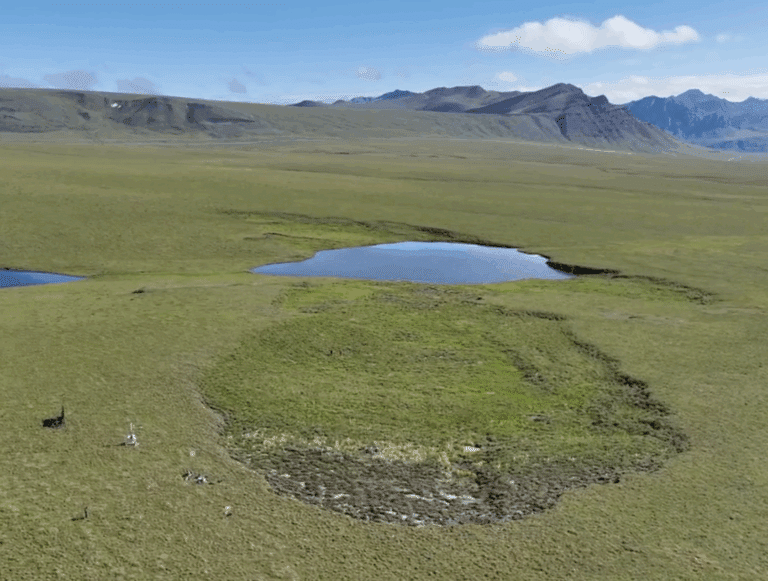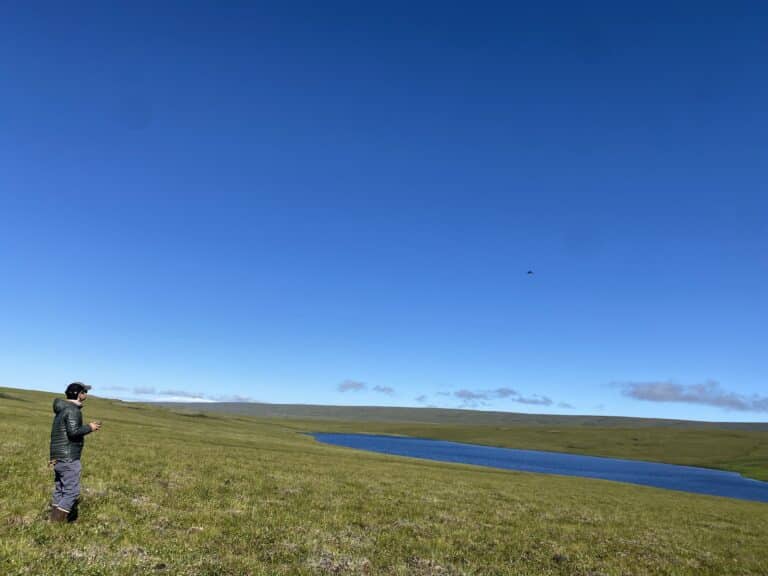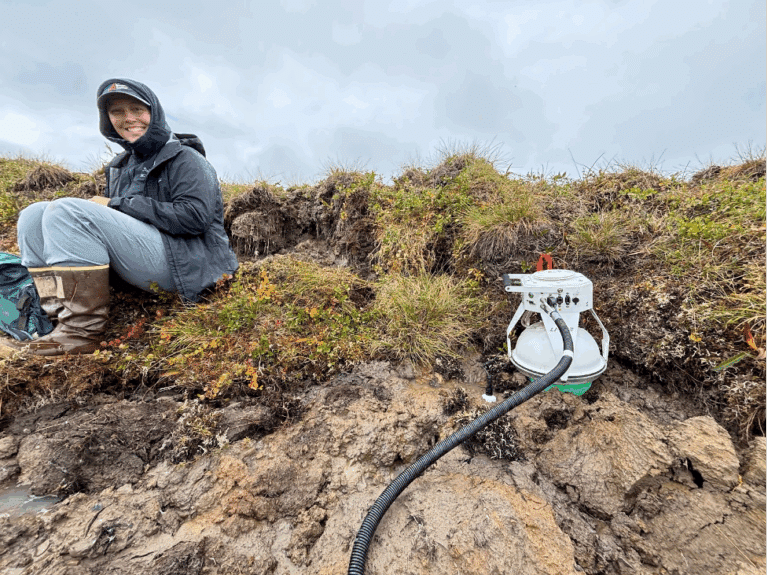photo by Tiffany Windholz
- Jennifer D. Watts Associate Scientist
- Kyle Arndt Research Scientist
- Patrick Murphy Field Research Technician
- Kaj Lynöe Research Assistant
- Christina Minions Research Assistant
- Andrew Mullen Research Associate
- Tiffany Windholz Research Assistant
Extreme permafrost thaw is a global threat. Our mission is to study the impacts of thaw slump features on Alaska ecosystems and global climate.
The Arctic stores over a third of Earth’s soil carbon in frozen ground—permafrost. Permafrost lands, including those in Alaska, are now warming faster than anywhere else on Earth. The region has the potential to release dangerous amounts of carbon into the atmosphere as greenhouse gases, including carbon dioxide (CO2) and methane (CH4).
When ice-rich permafrost thaws, it also can create an extreme change in the landscape—sometimes called a megaslump, or a retrogressive thaw slump (RTS). However, very little is known about the environmental and climate consequences of these events, which are developing much more rapidly now across northern Alaska and elsewhere in the Arctic.
Research area
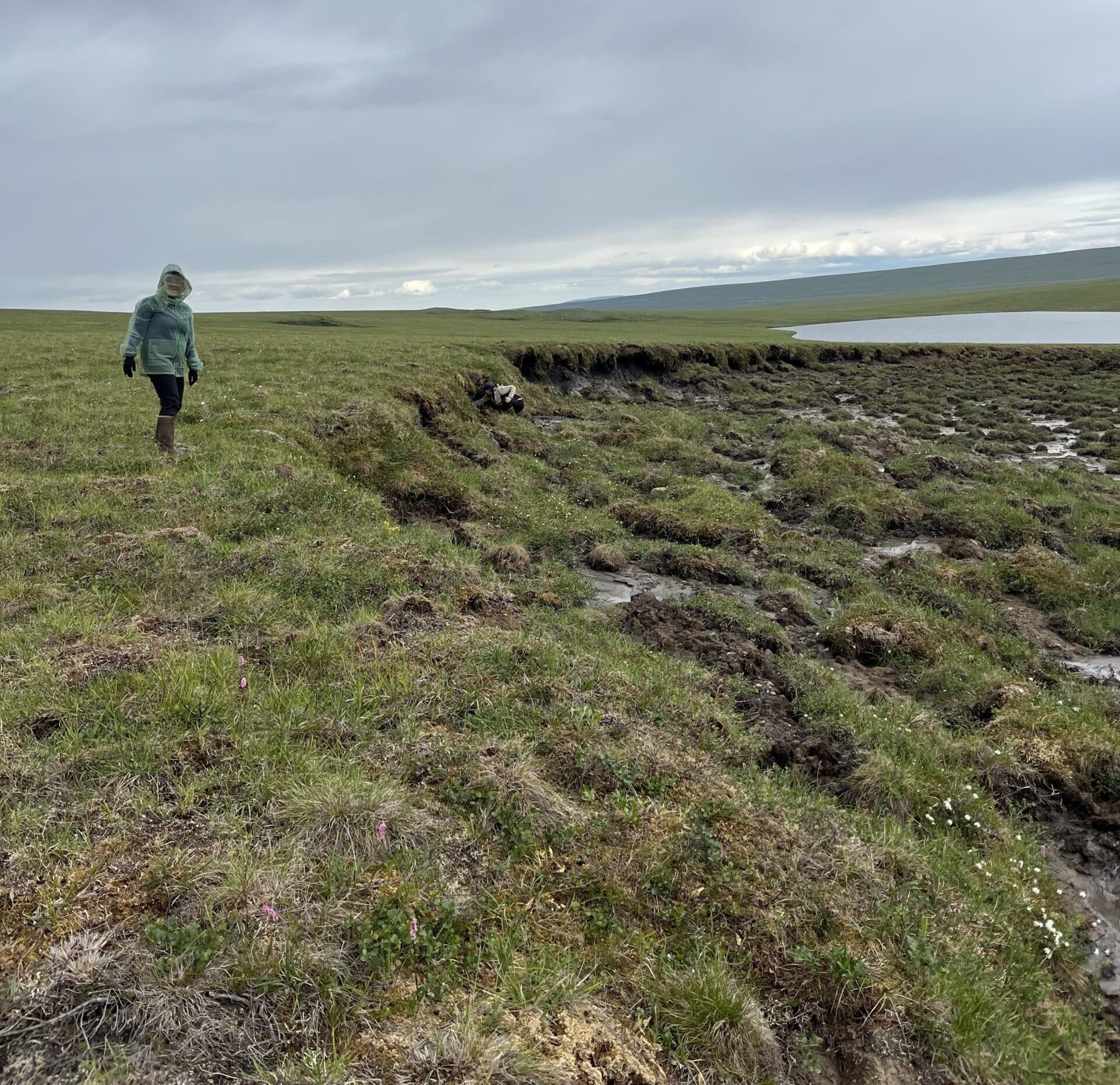
Side view of the thaw slump. Photo by Dr. Jennifer Watts
Our Work
Woodwell’s Alaska Extreme Thaw Observatory is responding to the urgent need for more information about the climate impacts of megaslumps, and the land/climate feedbacks that activate and drive these land collapse features. Our Observatory is located at a slump site just north of the Brooks Range, where the instrumentation we’ve installed is allowing us to track the advance of the slump over time.

Aerial photos and imagery since 1949 show the growing area of terrain formed by thawing ice-rich permafrost, which over time evolved into a retrogressive thaw slump. Photos from the United States Geological Survey (1949, 1978) and UAV imagery from Toolik Field Station’s GIS department (2019, 2025).
Our Impact
Our team is tracking the amount of greenhouse gases being released into the atmosphere throughout the year from a megaslump, and identifying the changing environmental conditions that propel (or in some cases mitigate) them—research that has never been done before. The data we collect will be used to improve ecosystem models and future climate predictions, and to identify possible nature-based options for climate mitigation.
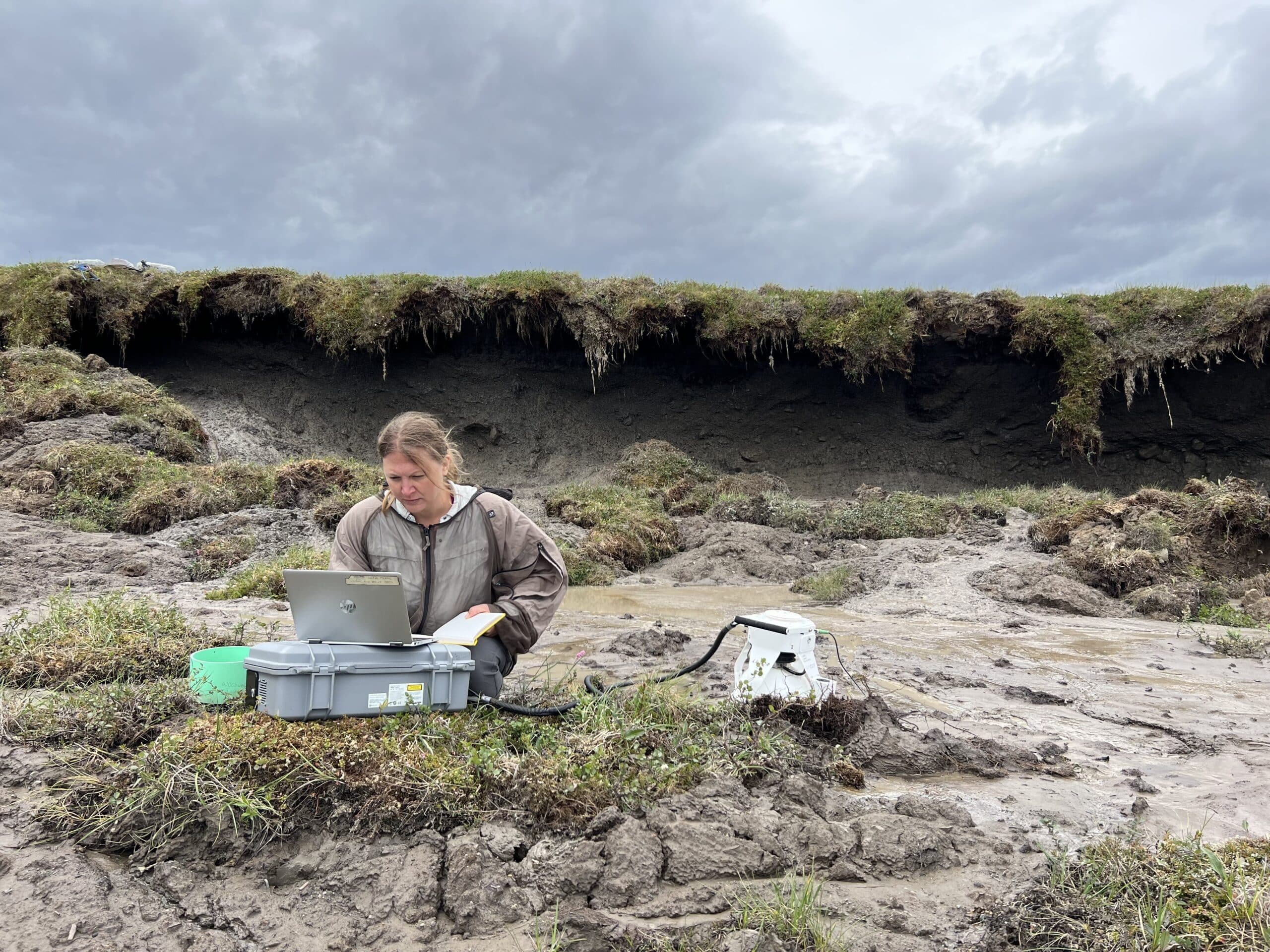
Dr. Jennifer Watts measures greenhouse gases coming from the soil. Photo by Dr. Jennifer Watts.
Support
This Observatory was launched with seed funding from the Woodwell Fund for Climate Solutions, and made possible through generous equipment support from the DOE AmeriFlux Rapid Response Flux Systems program. Additional partners, including Permafrost Pathways and Protect Our Winters, strengthen and expand this work.
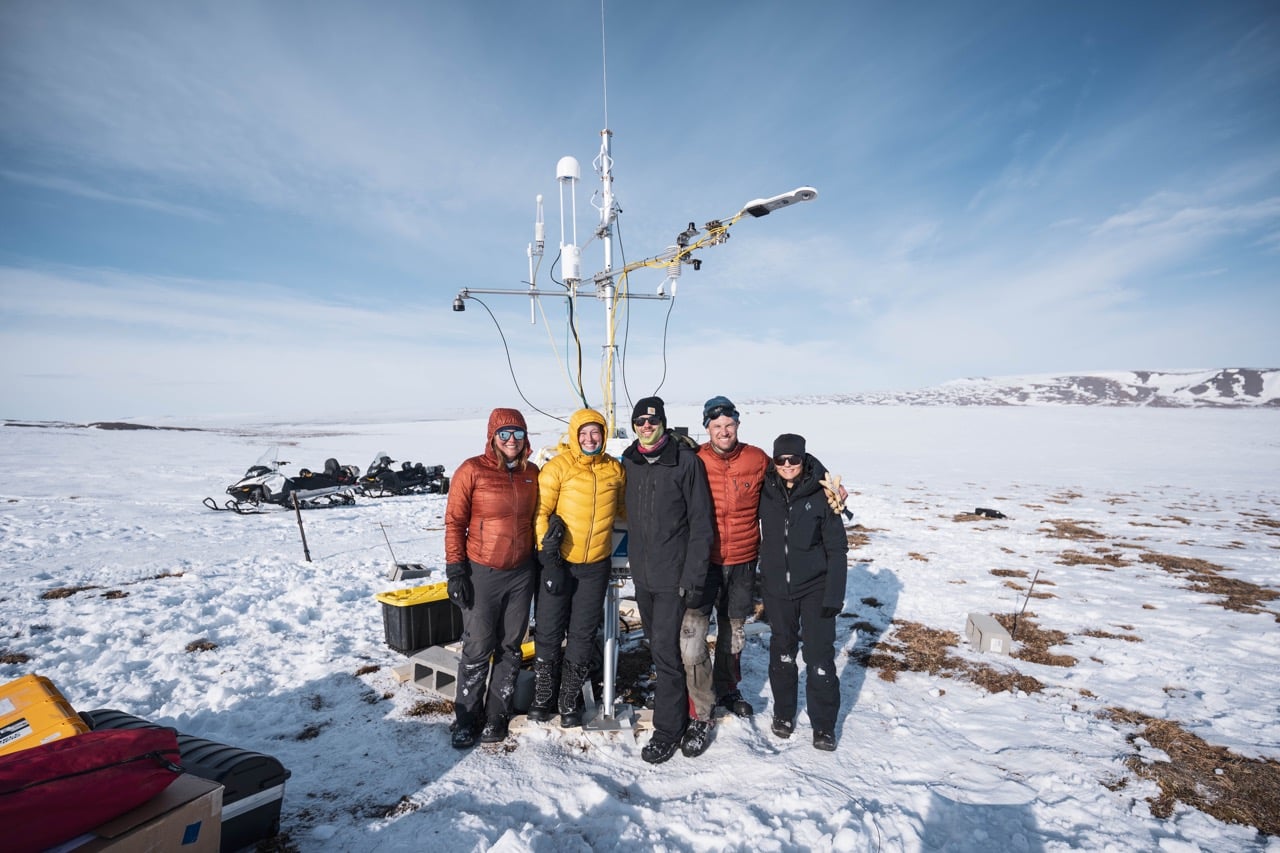
Project team members (from left to right) PI Dr. Jennifer Watts, Christina Minions, Co-PI Dr. Kyle Arndt, Kaj Lynoe, and visiting snow scientist Dr. Kelly Gleason (Portland State University). Photo by Jayme Dittmar / North Exposure Studios.
Your support can help us build this critical effort to track climate change in the Arctic and protect fragile tundra ecosystems. To learn more about directing a charitable donation or grant to support this work, please contact the Woodwell Development Team (development@woodwellclimate.org) or the Foundation Relations Team (fr@woodwellclimate.org).
If you’re interested in visiting the site with our science team, please reach out to Kyle Arndt or Jennifer Watts.
Climate change is driving the rapid loss of Arctic permafrost, and severe consequences to plants, wildlife and people. We need to act fast as a global community to reduce warming, and protect critical tundra ecosystems from additional severe disturbances, like resource exploitation.Dr. Jennifer Watts, Associate Scientist




